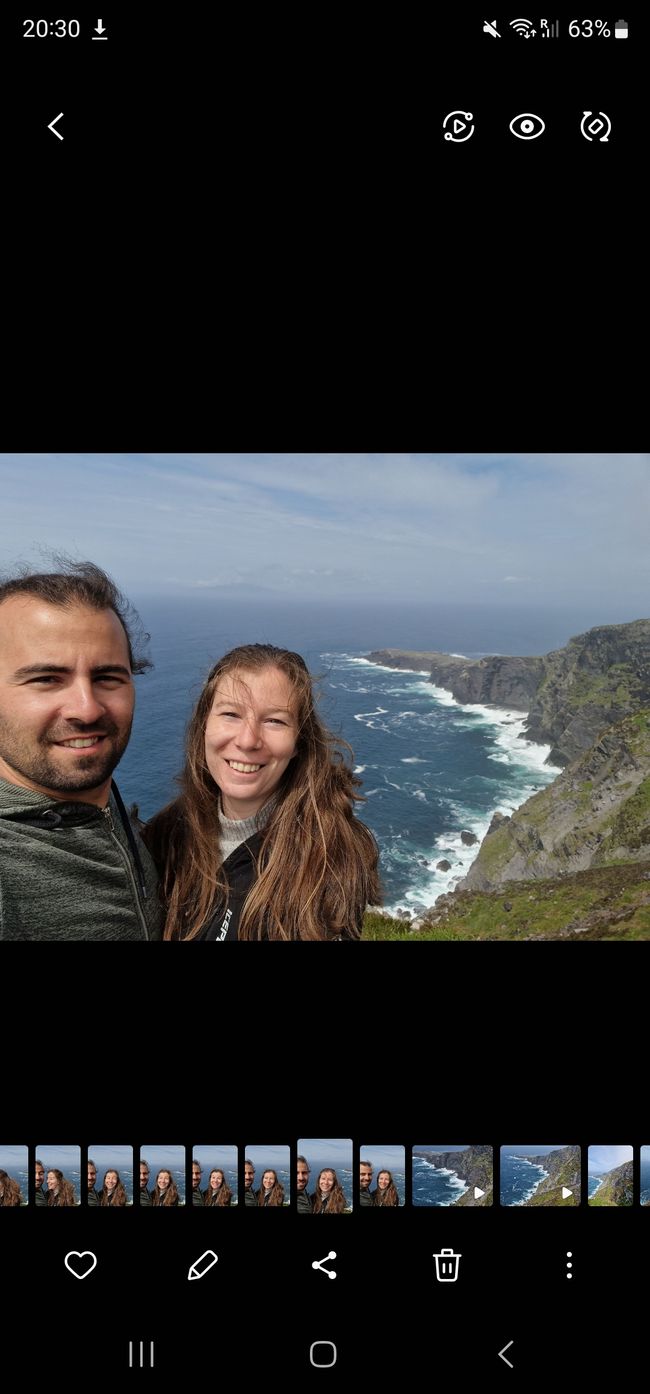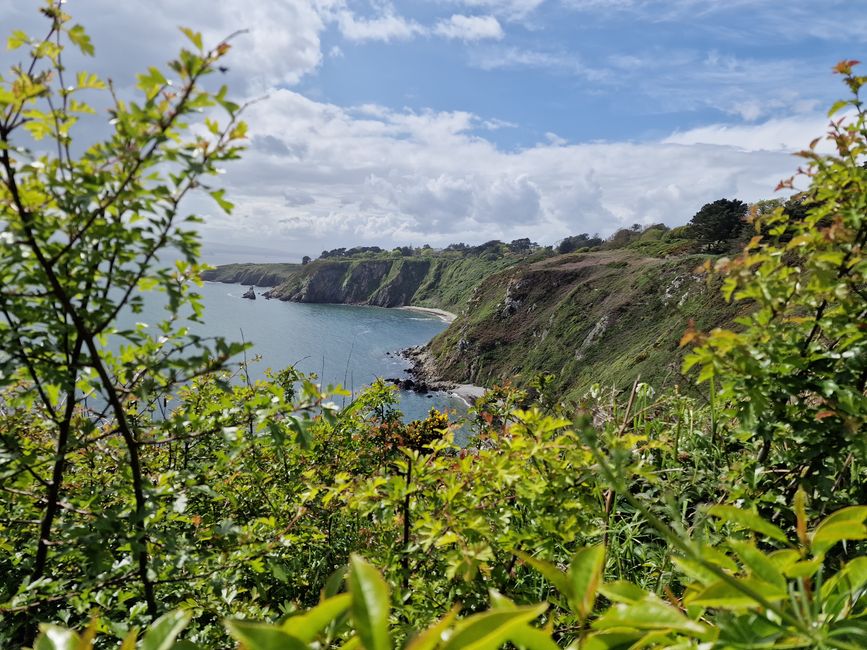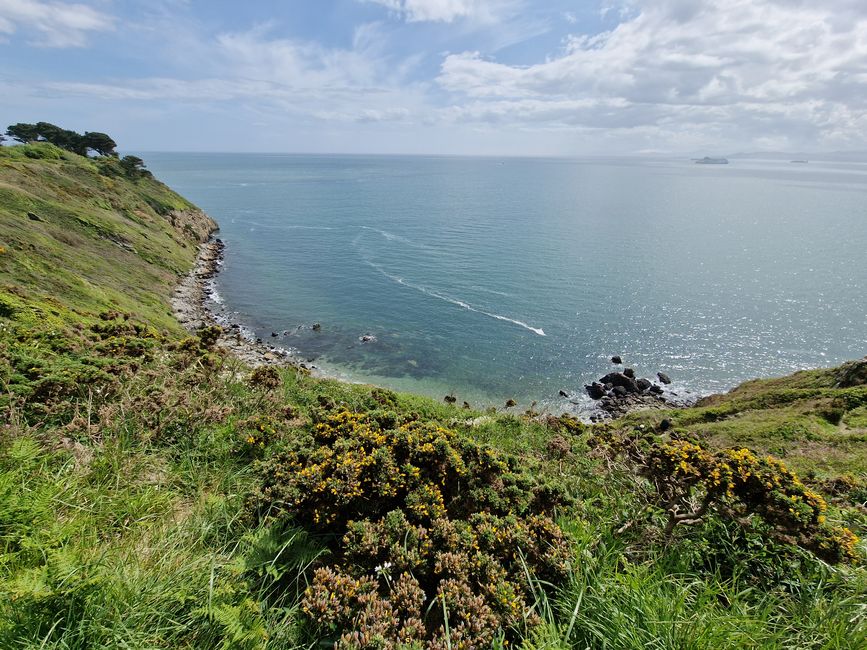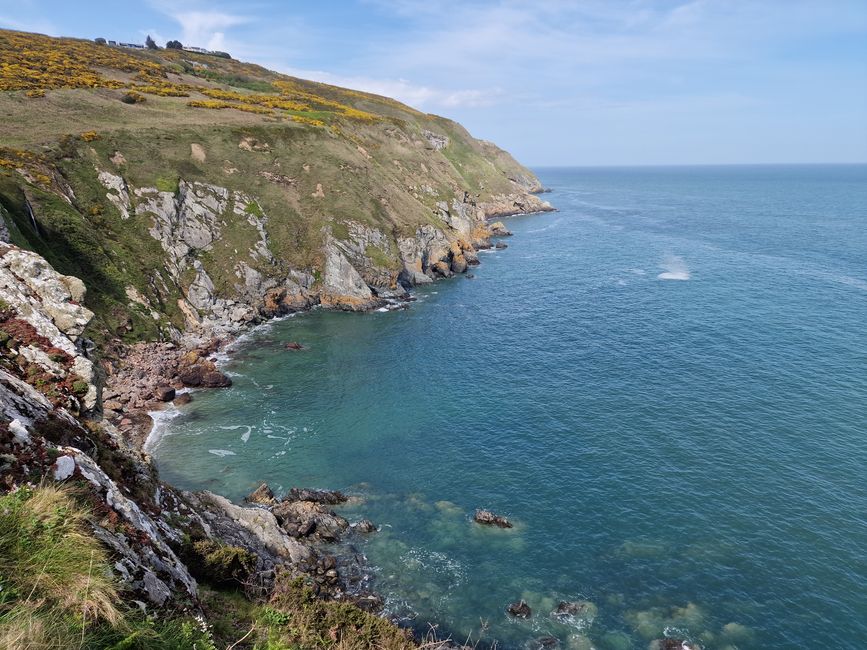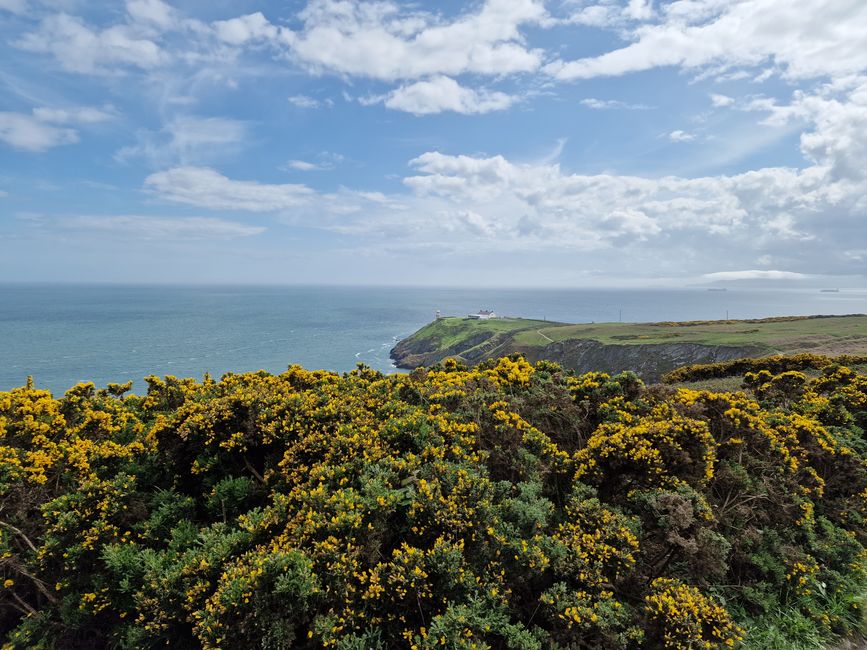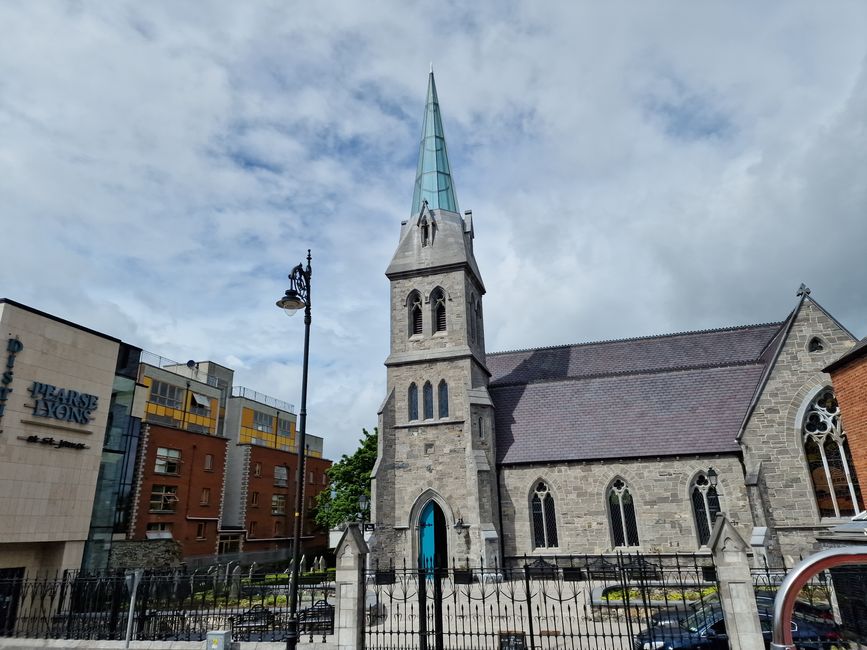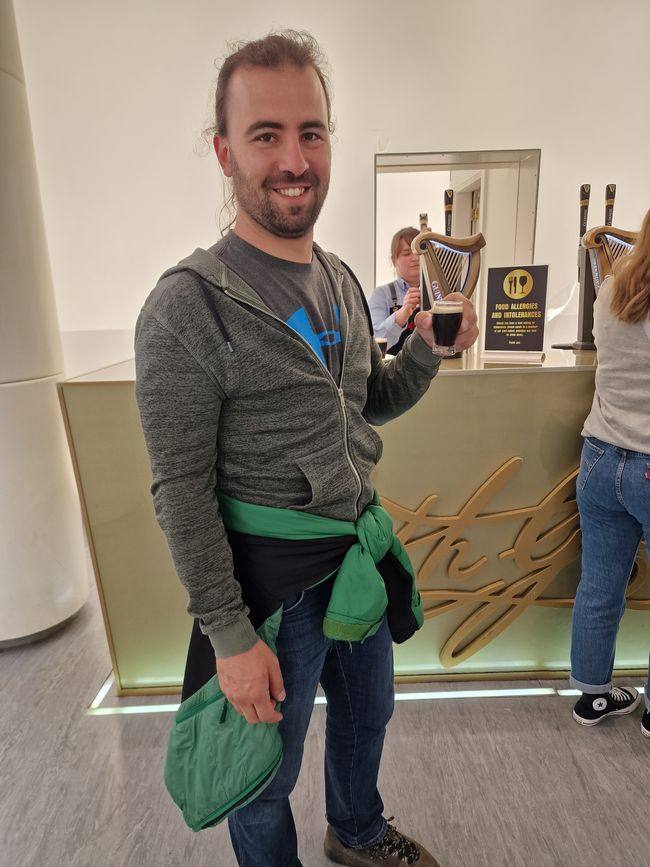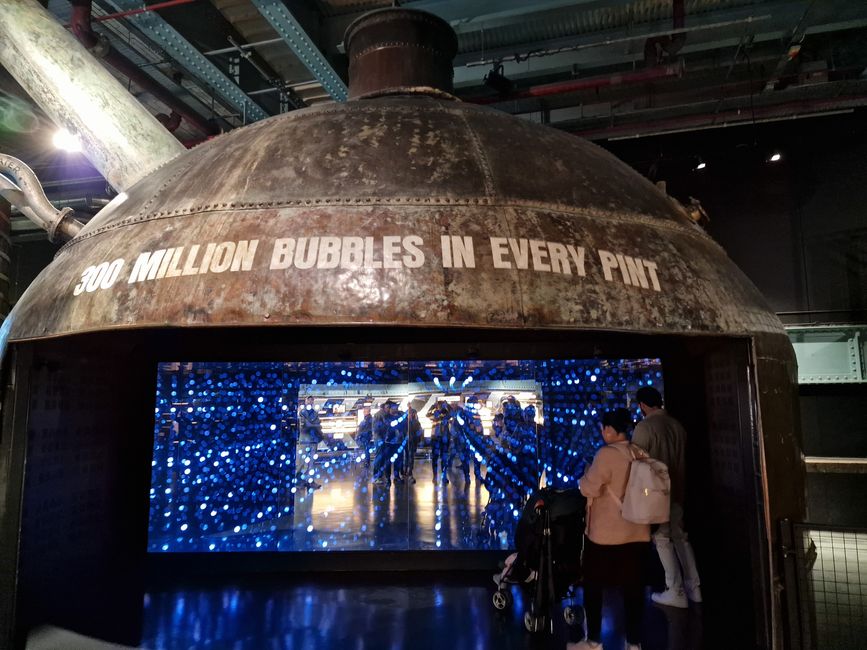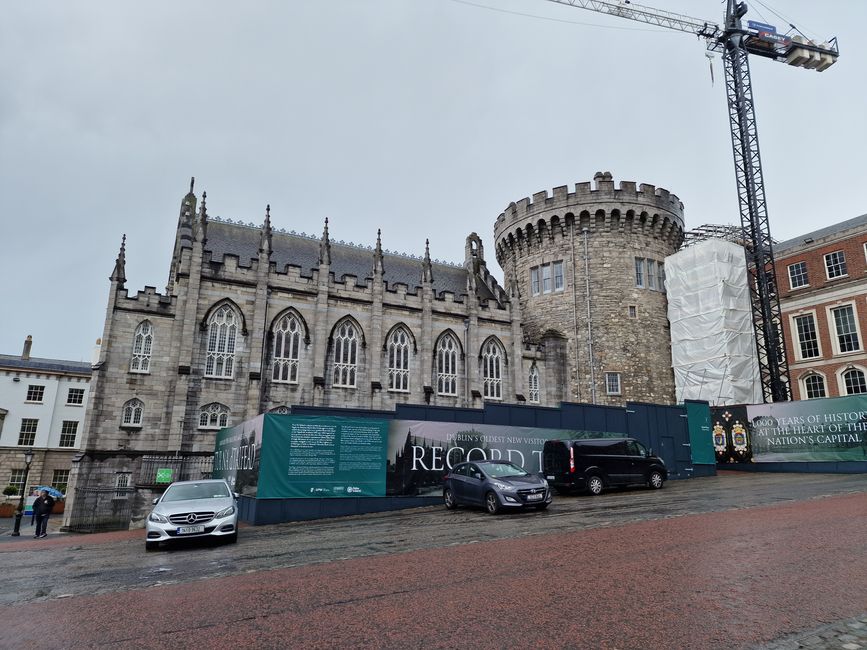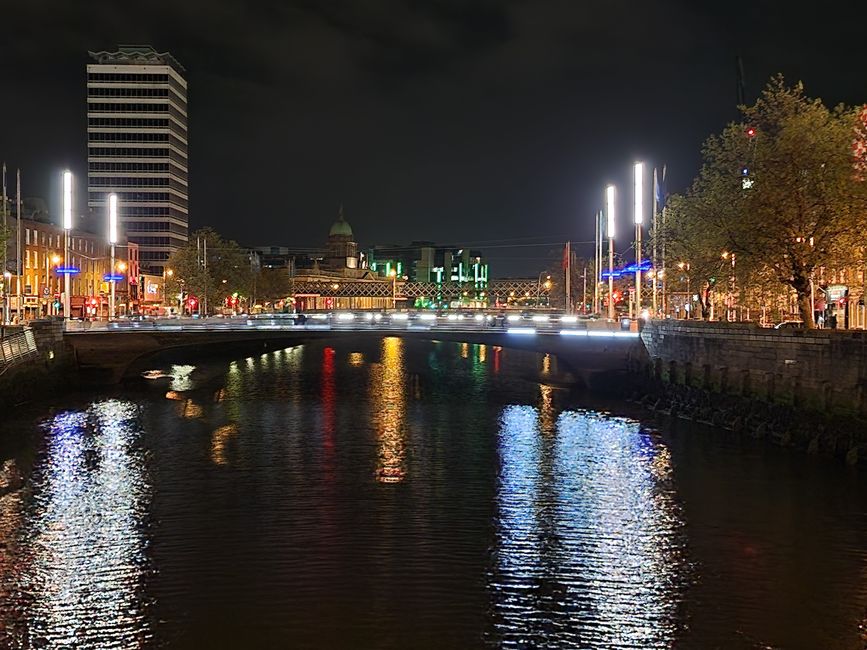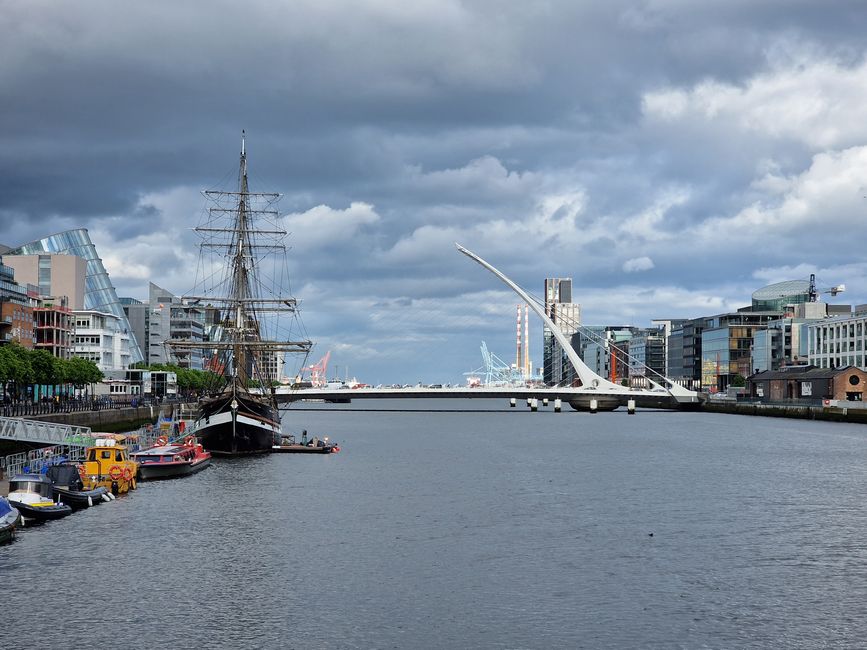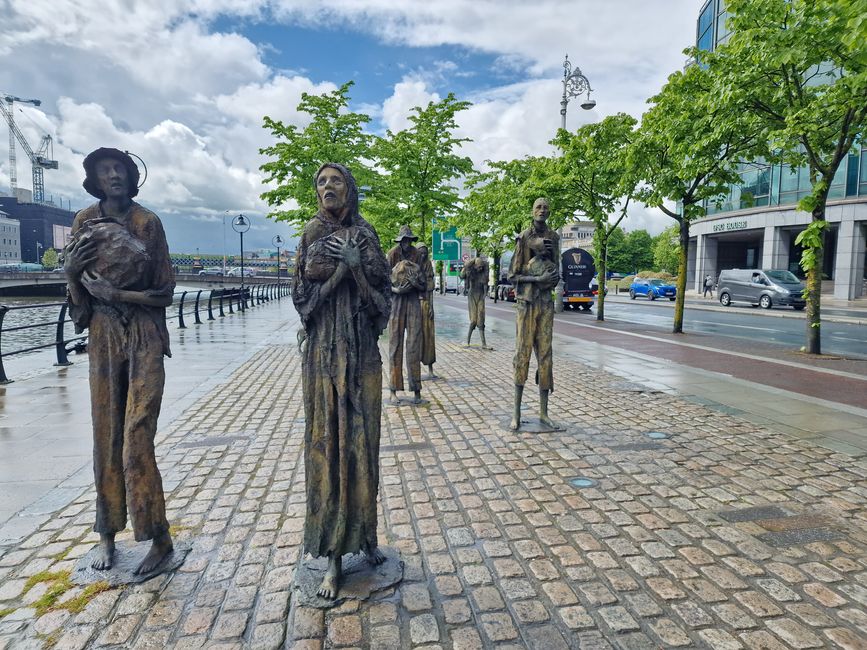Dublin
Lofalitsidwa: 11.05.2023
Lembetsani ku Newsletter
On Tuesday we spent the whole day with Sarah's other aunt and uncle on the Howth Peninsula, which is also part of Dublin. After lunch at their home, we walked up the highest hill. From there, we had a wonderful panoramic view of Dublin Harbour, back to Sandymount, and Ireland's Eye. The name does not come from Ireland's eye, but the Celts referred to it as the Eria Island. Eria was a woman's name that evolved over time to Erin, derived from Éireann, the Irish word for Ireland. The Vikings replaced the word island with Ey, the Norwegian translation, so the island was called Erins Ey and eventually became Ireland's Eye.
After that, we continued walking through the mud. We had splendid weather, the sun was shining, and, believe it or not, by the end of the day, we even had a slight sunburn on our faces. However, since it had rained in the previous days, the water could not dry under the numerous bushes. But soon, we returned to the normal road. With our dirty shoes, we walked through the very affluent neighborhood of the peninsula and then reached the so-called 'Cliff Walk,' a beautiful trail slightly above the cliffs that offered us a magnificent view. In a few places, you can go down a steep path to the beach. Some residents swim in the sea here every day. At the tip of the island stands an unmanned lighthouse. Unfortunately, we couldn't go there because there is a residential house a few meters in front, and it would mean trespassing onto private property. So, we continued walking, eventually going up the stairs and then treating ourselves to a beer and fries in a restaurant.
We continued to spend the afternoon and evening with the relatives and later, before taking the train back to Sandymount, we went for a walk at the harbor.
On Wednesday, we were the tourists in Dublin. We decided to take the well-known Hop on-Hop Off bus to explore the city. Our first stop was the Guinness Brewery. Spread over seven floors, you can learn everything about the brewery's over 260-year-old history and the details of the beer-brewing craft. They even provided a free tasting glass, and in the top-floor bar, thanks to a voucher, you could treat yourself to a pint of Guinness. Or at least Lukas could, because something didn't work for Sarah when it came to her Irish heritage...
We continued our tour by bus and finally visited the EPIC, the Irish Emigration Museum. For all Dublin visitors: Definitely worth a visit! Opened in 2016, it shows visitors the early history of Irish emigration and how it continues to influence many countries around the world with music, dance, and tradition. After dinner, a visit to a pub was obligatory for us. However, instead of going to the famous Temple Bar, we went a few streets further to a cozy pub that also featured live music. There, we found information about a walking tour that focused on the history of the fight for Ireland's independence, specifically the 1916 Rebellion. That's why we decided to do this tour on Thursday. And it was definitely worth it. Very informative, with many names, their stories, and faces, but also many dates, attacks, and politics. For those interested in this important part of history, we highly recommend this tour.
After the tour, we visited the 'Famine Memorial.' A few statues on the bank of the River Liffey, erected in honor of the many deceased and emigrated Irish during the Great Famine from 1845 to 1852. When you look at the statues up close, it sends chills down your spine. This part of Irish history is truly dark. Starting in 1845, potato blight almost destroyed the entire potato harvest each year, which was the main food source for the Irish. Many other countries were also affected by this blight, but since Ireland was still under the rule of English tyranny at that time, the meager harvest still had to be exported. If the tenants could not meet this requirement, their land was taken away, and as punishment, their own house was burned down. 1.1 million Irish people died of hunger and its consequences, and an additional 1-1.5 million emigrated. At that time, Ireland had around 8 million inhabitants. Today, there are nearly 5 million. So, the island has not yet recovered from the numerous waves of emigration.
So, today we had many interesting things to tell. A visit to Ireland is definitely worthwhile because it is much more than just pubs and Guinness. There's definitely those things too, but we will show you everything else in the coming weeks. Now, we are camping this evening in Wicklow National Park and will explore it tomorrow, Friday.
Lembetsani ku Newsletter
Yankhani (3)
Roman
Sehr eindrückliche Bilder!! DANKE! Würde mir auch gefallen.....Brigid
Ah, the International...
Where we grew up, all the gang, at least every Saturday afternoon/after getting fruit and veg for the week in Moore St. Those seats could tell many a taleHelen
Loved those Saturday afternoons in the International bar and Simon, the wonderful barman who welcomed you back by name Brigie when we visited many many years later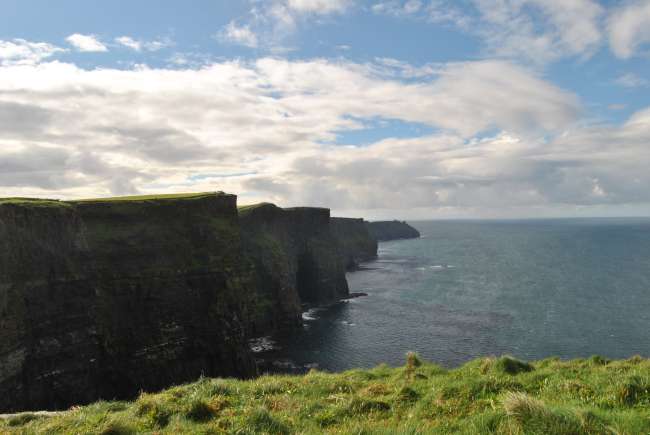
Malipoti amaulendo Ireland

